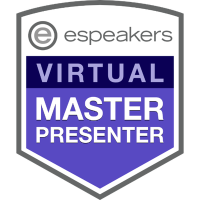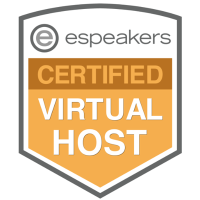|
Over the past two weeks, I have proffered 4 tips you can use to create diversity programs that have a positive impact on individual and organizational performance. To summarize and for easy reference, I have listed these tips below with a hyperlink to each blog post:
Next Post: November 4, 2013 – Top Diversity Measures and Metrics
0 Comments
Determine how you will evaluate success. You must clarify how your diversity initiative will be evaluated. This is particularly important these days since the value of some diversity activities has been called into question (with good reason in some cases). The good news is that once you have effectively addressed the first three steps, the final step is relatively easy. That's because well constructed SMART goals have a built-in evaluation component. It's easy to tell if the goal has been achieved. For example, if your goal is to increase the diversity of employee candidate pools by 10%, at the designated point in time you simply measure to see if candidate pool diversity has increased by 10%. If not, you know you will have to modify your diversity program.
Next Post: October 31, 2013 – Getting Results from Your Diversity Program: The 4 Tips Determine how you will achieve your goals. Another step you will need to take to ensure the success of your diversity program is to specify how your SMART goals will be achieved. This includes the key actions needed for successful completion, the identification of the key players needed for carrying out these actions, and a completion date for each activity. These action plans do not need to be overly detailed or particularly long. In fact, they work best when they are brief and include just the information needed to clarify the requisite activities. Keep in mind that it is during this stage that your primary interventions and activities are implemented. Such activities can include training and development programs, mentoring and coaching programs, targeted recruitment activities, marketing of products and services to diverse clients, community outreach, development of diversity-friendly policies and procedures, creation of job aids, and celebration of cultural events. The key is to make sure you identify activities that will allow you to accomplish your SMART goals.
Next Post: October 28, 2013 – Getting Results from Your Diversity Program: Tip #4 Identify your goals and describe how they connect to your organizational objectives. A goal is a statement of a desired end state. It specifies where you want to be at a given point in the diversity initiative, and provides you with a means to evaluate progress. Effective diversity goals should be written using the SMART goal method:
Next Post: October 24, 2013 – Getting Results from Your Diversity Program: Tip #3 Define the benefits you hope to achieve. Put another way, what do you have to gain by implementing your diversity program? It doesn’t make sense to proceed with any type of initiative if you have not clearly defined the benefits you hope to gain and the value it will provide for your organization. Unfortunately, this is exactly what many organizations do. They engage in a variety of activities without a clear sense of what they hope to achieve or how these activities will impact their bottom-line.
Generally speaking, the benefits accrued from diversity programs can be divided into three categories, which include improved individual and organizational performance (e.g., improved quality of the workforce, increased ability to attract and retain the best human resources, increased organizational competitiveness, improved public image), enhanced customer service (e.g., greater ability to connect with and satisfy an increasingly diverse customer base), and improved organizational bottom-line (e.g., increased organizational value/profitability, increased revenues, reduced costs associated with turnover, absenteeism and low productivity, and reduced complaints and litigation). Whatever you hope to achieve, be clear about it from the start. Next Post: October 21, 2013 – Getting Results from Your Diversity Program: Tip #2 Over the past month, I proffered 10 tips you can use to create inclusive organizational environments. To summarize and for easy reference, I have listed these tips below with a hyperlink to each post:
Next Post: October 17, 2013 – Getting Results from Your Diversity Program: Tip #1 Start an organizational diversity program. According to a 2010 study by the Society for Human Resource Management (Workplace Diversity Practices: How Has Diversity and Inclusion Changed Over Time), more than two-thirds of surveyed organizations engaged in some type of diversity practice. The most common activities include diversity recruitment efforts, diversity training, community outreach related to diversity, alignment of business goals with diversity issues, creating career development opportunities for a diverse array of employees, and collecting measurements/metrics on diversity-related activities. Most importantly, organizations that engage in activities such as these report a variety of significant outcomes including:
Next Post: October 13, 2013 – Creating a Climate for Diversity: The 10 Tips Provide a mentor for every new employee. Mentoring is a series of conversations between a mentor and a protege that is designed to enhance the protege’s overall development. When done effectively, mentoring offers several benefits for new employees including an increased likelihood of personal and professional success, greater awareness of organizational politics and culture, improved job satisfaction, and an increased commitment to the organization. Here are a few tips to ensure your mentoring program is successful:
Next Post: October 10, 2013 – Creating a Climate for Diversity: Tip #10 Facilitate a brown bag educational series. This lunchtime activity is a good way to facilitate social interaction across cultural differences, and to provide employees with a helpful learning experience. The participants bring their lunch and take part in an educational seminar of interest to the group. You can enhance the success of the series by identifying topics of interest in advance, and then identifying effective speakers to facilitate each topic. Here are some examples:
Next Post: October 7, 2013 – Creating a Climate for Diversity: Tip #9 |
AuthorDr. Tyrone A. Holmes is an author, speaker, coach and consultant. He helps his clients develop the skills needed to communicate, resolve conflict, solve problems and improve performance in diverse organizational settings. Archives
March 2016
Categories
All
|
 RSS Feed
RSS Feed

